I’m building a bar, here in Humboldt, and I'd like to tell you about it.
I’ve been poking at this idea for nearly two years now, and while COVID threatened to derail the entire project just as I was getting going, a whole host of things has recently stirred me to renew my commitment to it.
The project is just one of many I've taken up in recent years under the umbrella of A Bolder Humboldt (ABH), the non-profit development group my siblings, my wife and I, and a couple friends organized in 2017. We renovate buildings, transform properties, design, develop and run businesses, organize community events, and more, all in an effort to provide a rich cultural future for our little, industrious community of Humboldt, Kansas (pop: 1800), whose downtown desperately needed some investment and energy after years of disuse and decay.
The prospect of being completely open about this process—of sharing the sometimes-ugly and slow reality of bringing an A Bolder Humboldt project to life—is new and a bit uncomfortable. My natural posture is to paper over the windows and work in the shadows, only offering up a finished product in a sort of grand reveal. Most of the time, that's an underwhelming conclusion. I find most of the joy and value is in the work itself, in the myriad nitty-gritty debates and decisions. And so I hope to unlock a more interesting version of our process, one focussed on sharing it with others. I think that will be especially true in this case, where I'm very much starting from a position of domain ignorance and uncertainty, and where being open and accountable and vulnerable and collaborative feels beneficial and, perhaps crucial, to the success of this particular business.
The location: a quick orientation…
My bar project—the one I'll be writing about here—is just one of several "drinking establishments" ABH is currently pursuing in town. There's been a lot of work towards (and rumors about) our microbrewery project in the old Wonder Bread depot; this is not that. My pal Paul Cloutier, a fellow ABHer, leads another project renovating the old "Reb's Place" into its own unique thirst parlor. There are others too nascent to even mention.
No, this will be something completely different. Occupying the east half of the ground floor of The Bailey, one of Humboldt’s showiest and most historical buildings (I pieced together its 115-year list of tenants here and here), this project aims to fill the role of the "elegant lobby bar," riffing on the building's identity as our town's local hotel.
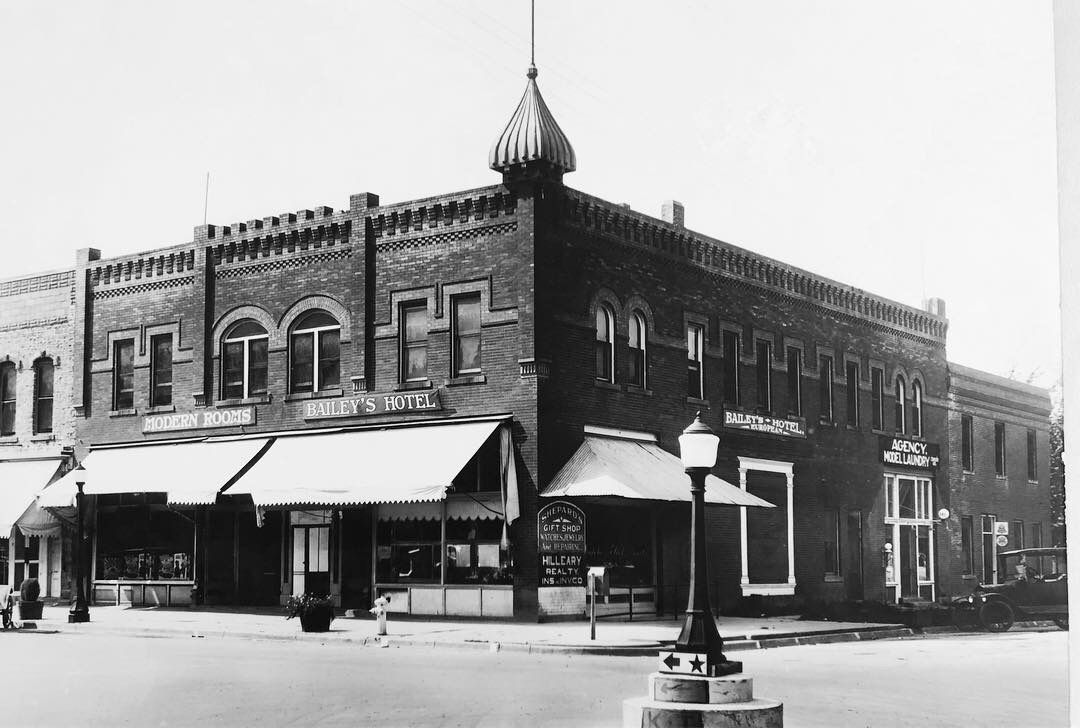
Located at the main intersection, at our town's only stoplight, and across the street from our beautiful public square, The Bailey has a prominent place in ABH's revitalization of Humboldt’s downtown. We're already deep in an effort to renovate the building's guest rooms, extending The Bailey's legacy as premium, overnight lodging for out-of-town guests. Fully realized, the building will be a hub of activity for visitors and locals alike. Guest rooms should be available in 2021.
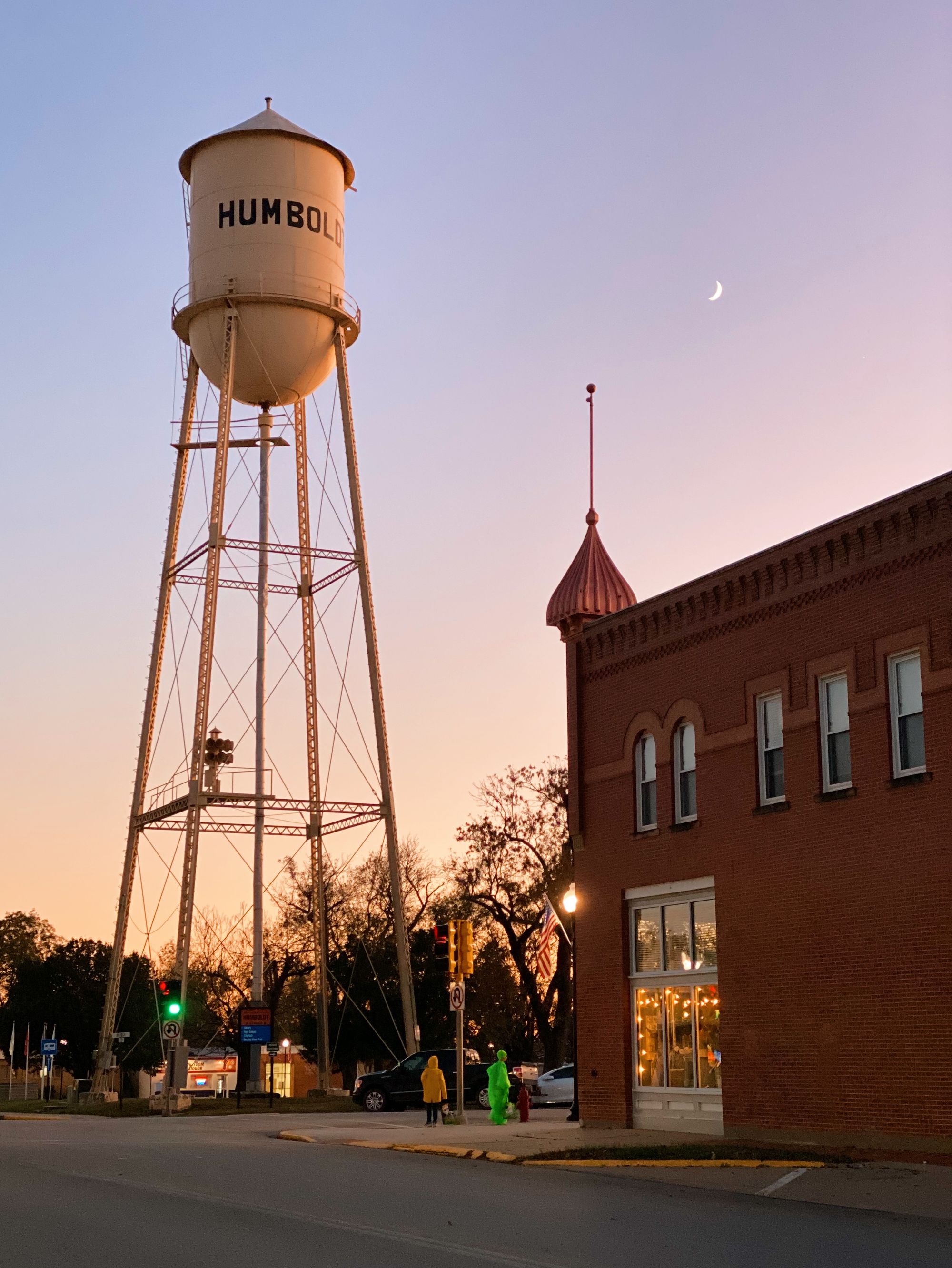
The ground floor has been put to more uses than we have time to cover here. Though the building was most-recently occupied by an offshoot of the Catholic Church, the ground floor was left almost exactly how local booster Paul Finney had operated it as a café and restaurant between 1998 and 2005.
Here are a few pictures of how we found it when we took possession in 2018.
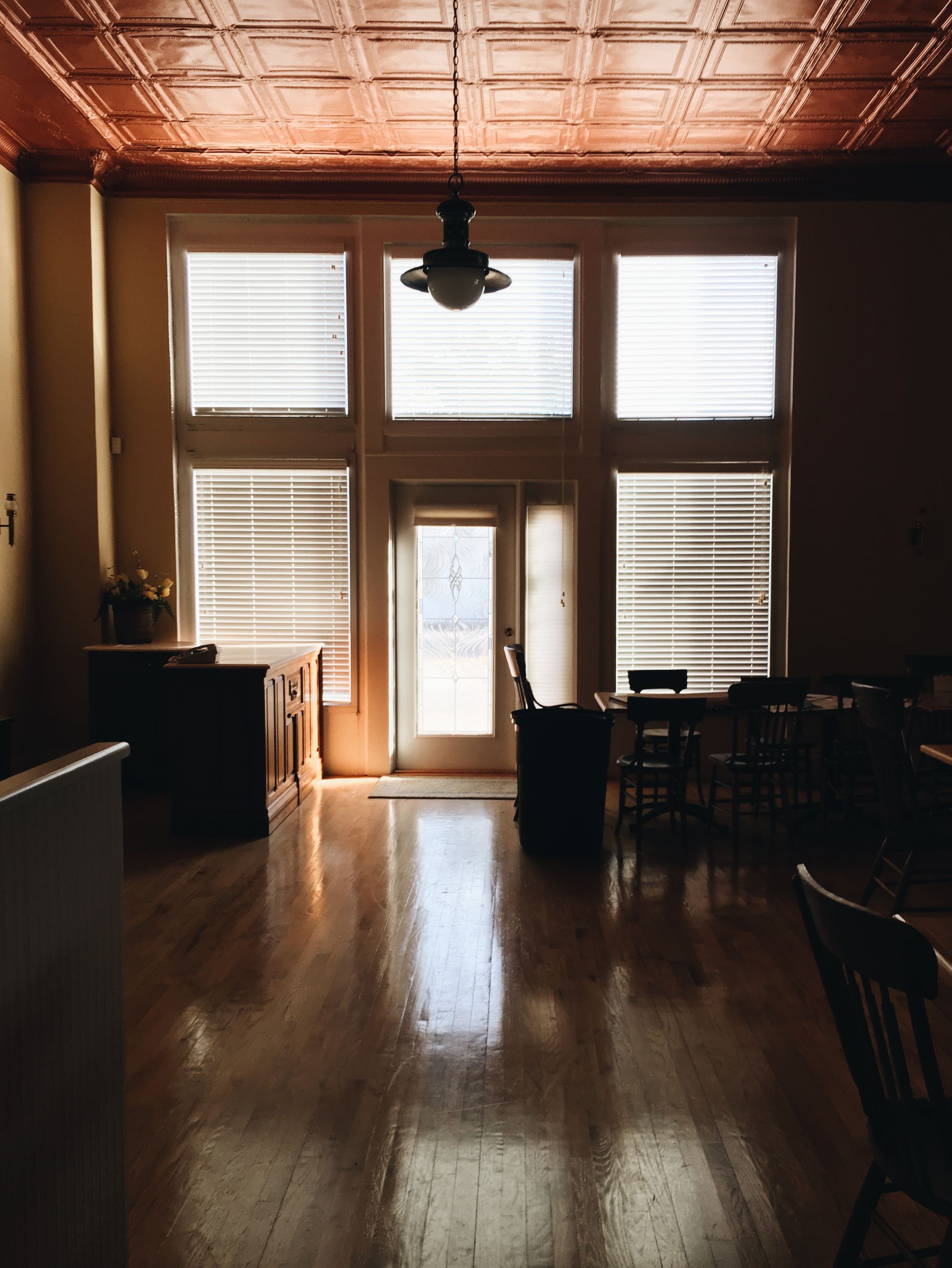
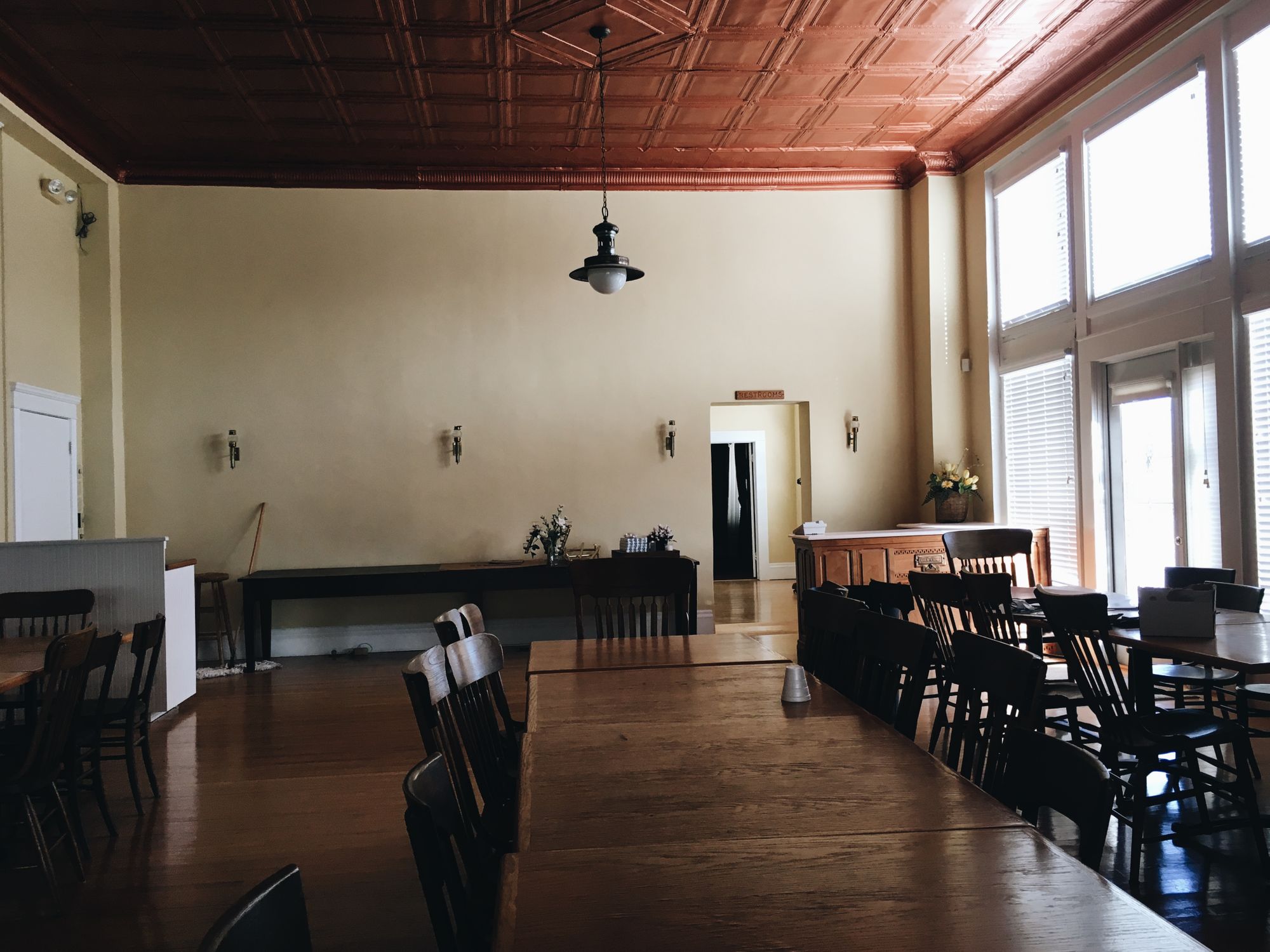
The Bailey is divided into many beautiful spaces. The entirety of the upstairs, as I mentioned, is being renovated into lodging. The downstairs consists of three former dining rooms and a kitchen. The west half most-recently served as storefront and storeroom to the wonderful, locally-owned boutique, Jae & Co.

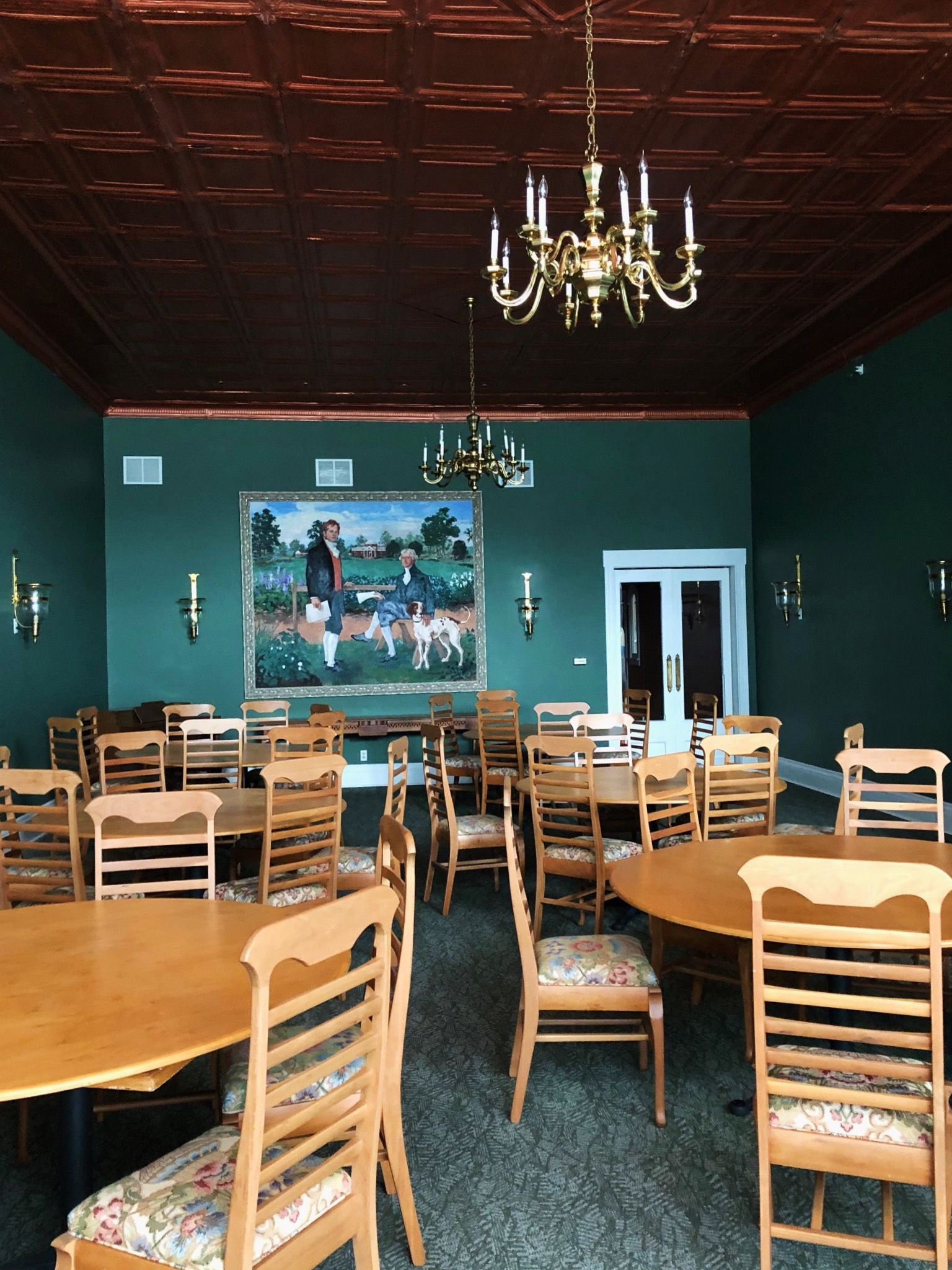
The east half features two large rooms; the front-most is being used for storage during renovations and will be the subject of its own project in the near future; the back room (seen as the former "Walter Johnson Cafe" above) is the future home of our "hotel lobby-style cocktail bar" and the primary focus of this blog from here on out.
The idea: a sort-of serious bar
This project demands to be quite unlike anything Humboldt’s seen before. It aims to fill a need that, let’s be honest, very few recognize as something that can even exist in a small town, or that "simple townsfolk like us" deserve, and so has felt like an extraordinary risk to take to build. But work like this—the painstaking, detailed, daring effort to bring bold ideas like this to life—is the lifeblood of A Bolder Humboldt. We wholly believe that big cities should not have a monopoly on quality or culture, convenience or beauty. We desire and deserve these things to accompany all the other benefits of small-town life: the pace, the affordability, the meaningful relationships,… the human-scale of it all.
And so we've made it our mission to build the town we want to live in—on the firm belief that we're not alone in these desires. What's driven a lot of the population away from small towns is not an innate inability of them to provide the lifestyle many desire, but because the challenges have been framed in terms that serve no one. I’ve been wrestling with fear of these challenges in all of my projects in Humboldt, but this one in particular has pronounced risks (what if people feel uncomfortable here?), and opportunity costs (surely there's a better use for this space!), and the distinct possibility of failure (all this investment!!). But today I find myself more hopeful than ever in the promise of a bolder Humboldt and big ideas like this one.
I’ve come to describe the concept simply as a “serious bar,” but you may get more traction out of “cocktail bar,” “speakeasy,” or “lounge.” Perhaps conjuring the lobby bar in an upscale downtown hotel would help. Indeed, its location in the historic Bailey building makes that the most attractive, apt analogy. My term of choice—"serious bar"—refers mostly to our approach in preparing cocktails and serving customers: we sweat the details and take that art and craft seriously. It does not necessarily refer to the atmosphere, or the customer experience; it is not a formal, rigid, overly-sophisticated place. On the contrary, we strive to soften the edges of our serious approach to drink-making to make the whole experience approachable and delightful for even the unacquainted. A lot of this mandate comes from my own unease in hyper-formal social situations, but also from a dedication to building environments and experiences that—while elevated from the usual small-town experiences—still feel rooted in Humboldt's industrious, prairieland roots.
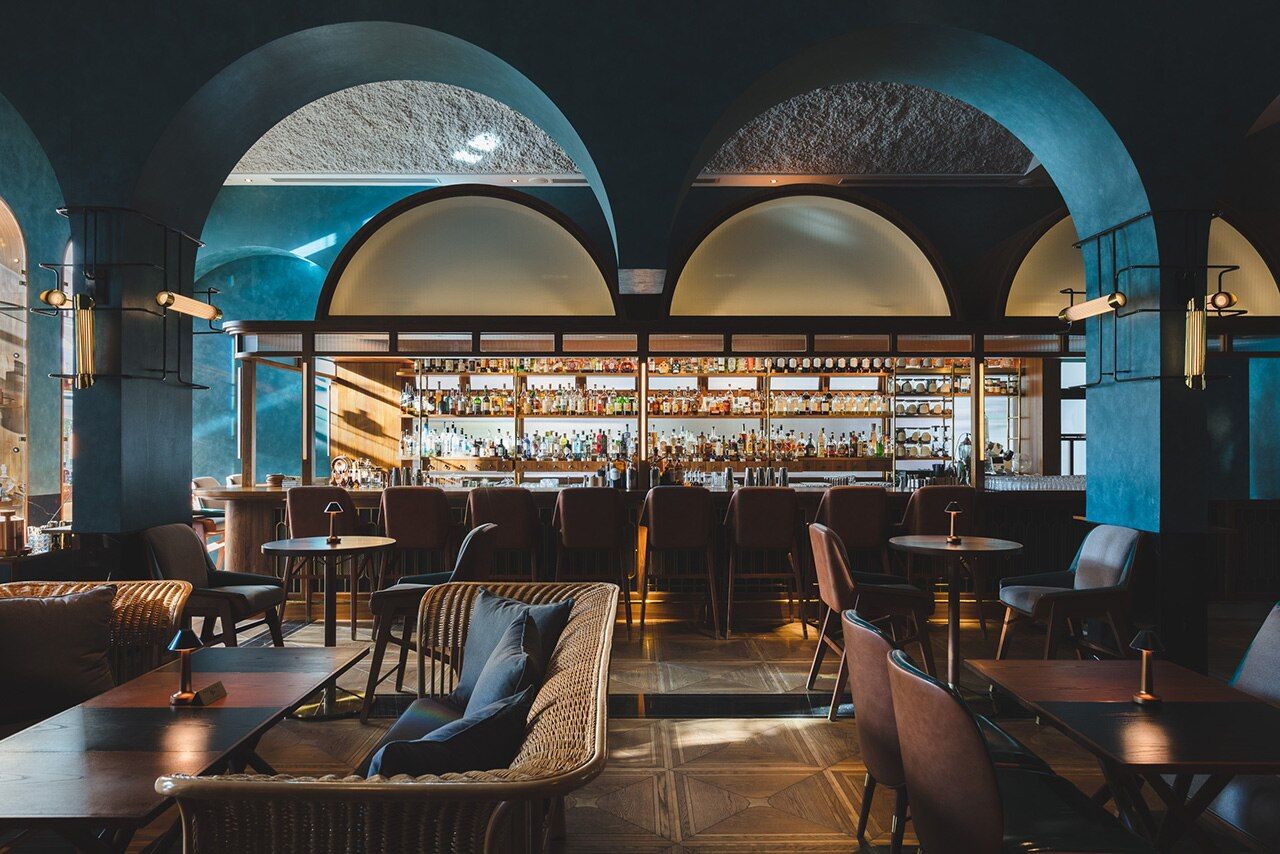
While beer and wine, and basic mixed drinks like “rum and coke” or “gin and tonic” will be available, the soul of a serious bar is in its cocktail menu, and each drink’s deliberate and precise execution. Embracing novel, quality ingredients and equipment, and sometimes elaborate recipes comprised of 6 or more ingredients, precisely dosed, the flagship drinks are complex experiences with eye-opening, sensory responses. Despite the 4-day “mixology course” I took in my early-20s, the world of cocktails is mostly a new one to me—and some of what I hope to write about here is my personal development into a greater understanding and appreciation for this world—and yours as well, I hope.
Aesthetically, the environment is dark, rich and textural, full of bold color, warm light, and comforting finishes like hard wood and velvet fabric. Using mostly soft seating, arranged in intimate vignettes, the venue is perfect for a relaxed after-work drink among co-workers, couples and doubles date nights, or an after-dinner respite with friends. While no formal dress code is enforced, the elegant, moody environment demands a modest reciprocation of attention and effort.
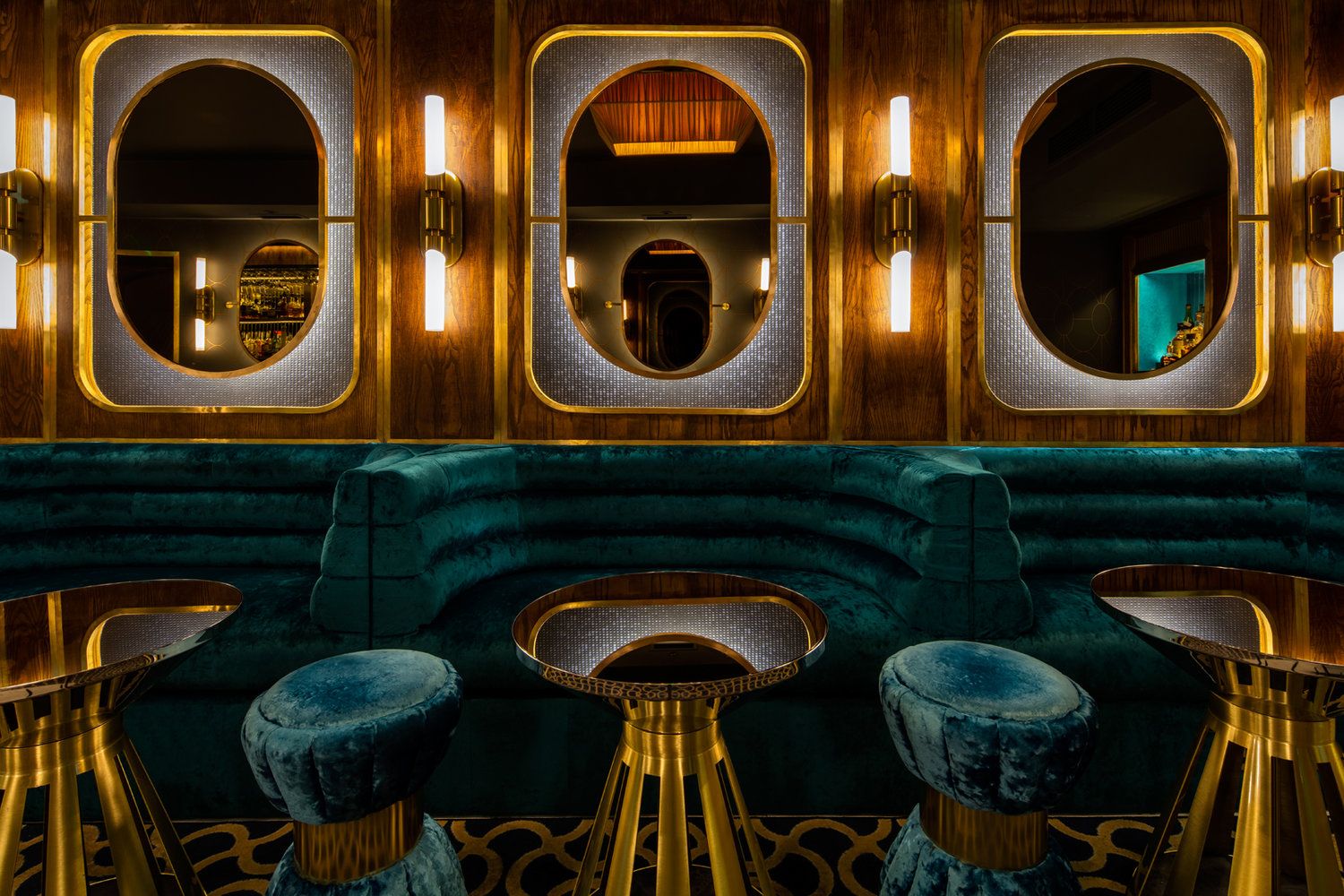
And but again: an implementation of this concept that takes itself too seriously is doomed from the start. While our mandate is to provide an experience that no other place in the area even attempts, we balance that gravitas with disarming moments of joy and whimsical approaches to the environment, decor and branding. What that means in practical, implementation details is, of course, yet to be determined.
To start making actual decisions to bring this concept to life, my approach is three-fold:
1) Research the actual history of the building, its owners and tenants and businesses, and their lives. What existed here before The Bailey was built? Why and when was this building constructed, and what types of things existed within its walls? What elements of that history are formative, interesting, and compelling enough to co-opt into modern use? For me, this starts with poring over old newspapers, and documenting the revelations I discover.
2) Learn as much as I can about the bar industry, hospitality, the art of craft cocktails, the architectural and design traditions and innovations of drinking establishments, and begin to narrow my focus on a particular approach to both the aesthetics and practical decisions that will shape the final product.
3) Develop a greater understanding of this project's place in the context of Humboldt and the work of A Bolder Humboldt. What are its services? Who are its patrons? When and how does it get used? How does it relate to the other work happening in the Bailey, on the square, and elsewhere around Humboldt? What is its message to locals, to potential visitors to Humboldt? What is its contribution to the social, cultural and economic landscape in town, and to the hospitality industry at large?
For the remainder of this blog, I'll primarily be documenting my journey at answering these questions, one specific issue at a time. I hope you’ll join me.
Thoughts? Email josh@abolderhumboldt.com, or join the discussion on Facebook.